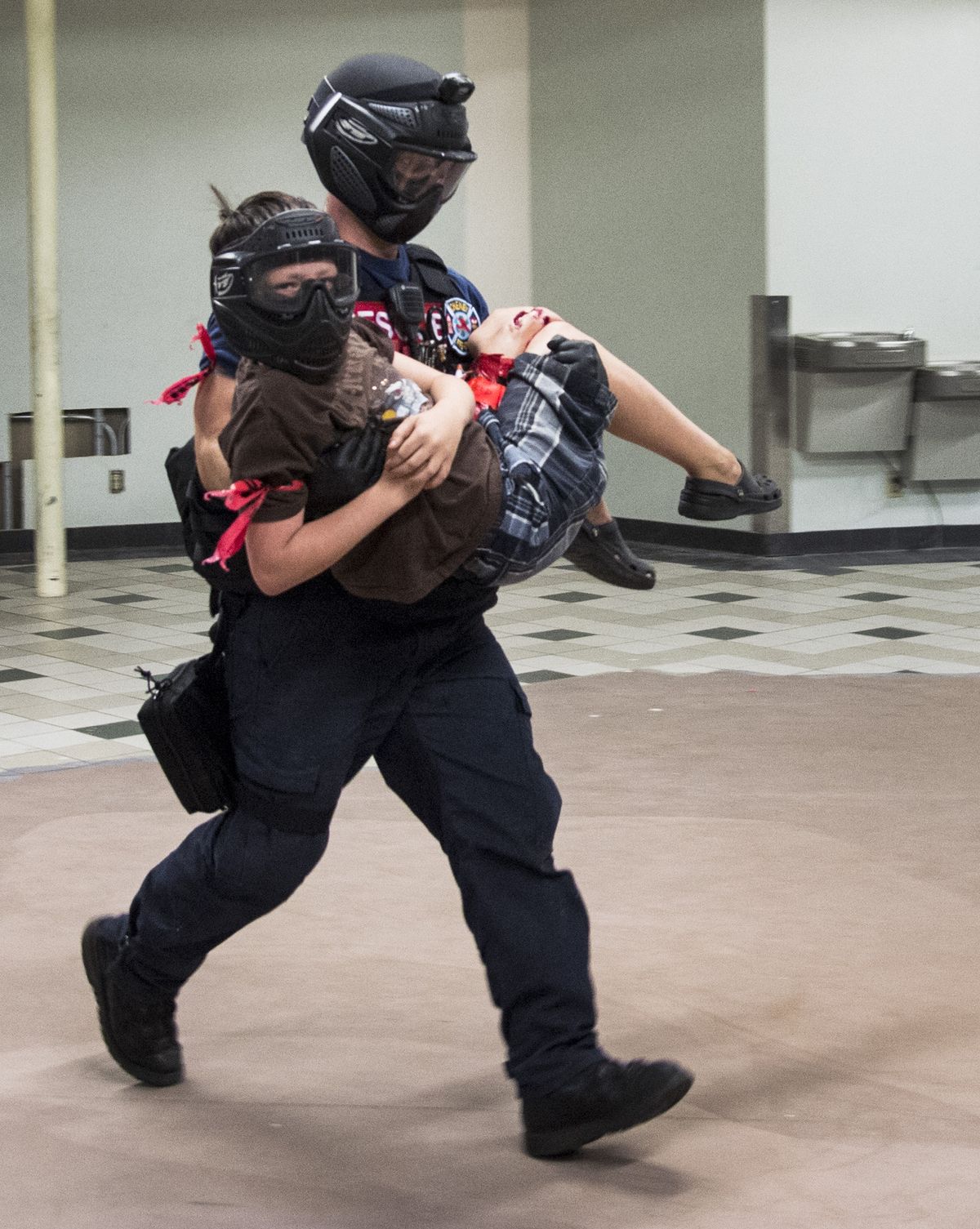Rescue Task Force trains to respond to active shooters, bomb explosions

The movie theater was dark, lit only by the headlamps on the helmets of firefighters as they searched for shooting victims. Suddenly the room exploded in shouts and gunshots as a previously undiscovered shooter made himself known.
After the chaos, firefighters emerged towing victims behind them on plastic tarps, heading for safer ground.
The movie theater in the basement of the NorthTown Mall was fake, as were the wounds on volunteer victims taking part in the Spokane fire and police departments’ Rescue Task Force training session Thursday.
The new task force trains to respond to active shooter and bomb explosion scenes, sending in specially trained paramedics and EMTs wearing bulletproof vests with the first wave of police to treat victims.
It used to be that firefighters would hang back and wait for police to completely clear a building and make sure the threat was gone before going inside, said Spokane Fire Assistant Chief Brian Schaeffer. But Schaeffer said he noticed that the victims didn’t fare well in such incidents across the country.
“A majority of those patients that were shot died because they had to wait until the scene was cleared,” he said. “We’ve learned from those incidents.”
The new task force became active in June after months of training. Schaeffer said the 12 firefighters on the task force train with police officers who volunteer to participate, not only SWAT team members. It mimics what would happen at a shooting scene, with medics going in with ordinary patrol officers.
“Patrol and the RTF are going to work together,” Schaeffer said. “We’re not going to wait for SWAT.”
The task force has not yet been used, Schaeffer said. They were initially called to the murder-suicide on the Deaconess Hospital campus on July 8 when it was thought to be an active shooter situation but they were not deployed, he said.
The task force members wear bulletproof vests with several bags of first aid equipment and supplies hanging from them. The word “Rescue” is written in red on the front and back of the vests. They also carry plastic tarps with handles so victims can be rapidly dragged out of the danger zone. Schaeffer said the extra gear weighs about 45 pounds.
Fire equipment operator Kyle Chase was leading the training session. Before the exercise started he spoke to the firefighters about the importance of maintaining their cover and of using their hands to feel for hidden wounds.
“These are situations where bullets are still flying,” he said.
The goal was quick rescue: grab the patient and go after minimal life-saving treatment such as tourniquets or a special adhesive bandage to cover chest wounds. It’s important to check every patient and make initial life-saving efforts even if they appear to be dead, Chase said.
“We don’t want to give up on our patients,” he said. “They’re fighting for life, and it’s our job to fight with them.”
Lt. Jamie Newcomb was one of the firefighters dodging fake foam bullets and trying to treat patients in the dark.
“It definitely complicated it, but that’s why we practice,” he said.